Arches National Park, located near Moab in southern Utah, features incredible natural arches, plenty of fun hikes, and panoramic views of La Sal Mountains.
Here are some Arches National Park fun facts that you may not know.
Planning a trip to Arches National Park is getting harder all the time. You can make your planning easy and stress free with a detailed itinerary. I have 1-, and 2-3- day itineraries for Arches National Park that include all the park highlights, give you choices based on your preferred activity level, and take all the stress out of planning your trip.
No time right now to read these fun facts about Arches National Park? Pin It and save it for later:
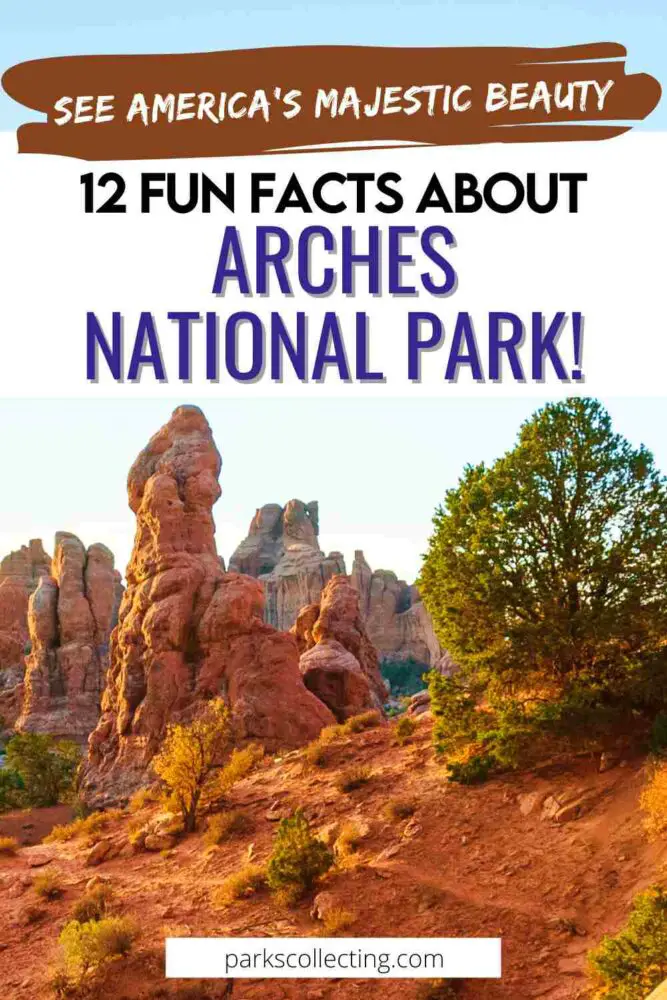
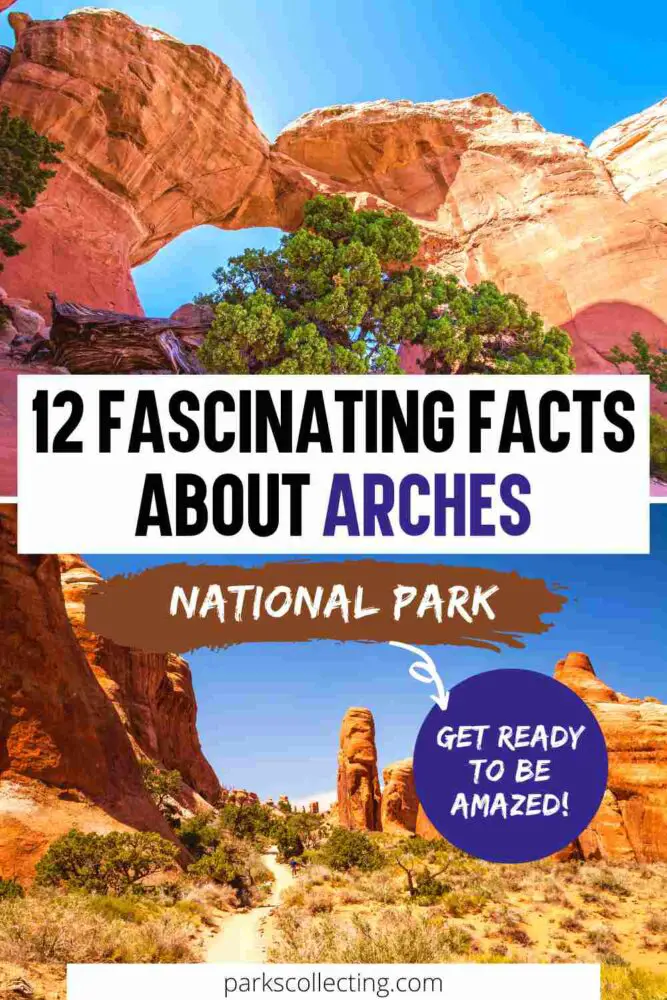
🛏️ TOP HOTEL PICK: Check availability now
🚘 FIND THE CHEAPEST CAR RENTAL: Search Discover Cars for the best deals
✈️ FIND THE CHEAPEST FLIGHTS: Search Skyscanner for the best deals
🧳 GET TRAVEL INSURANCE: Get insured with Travelex before you go
📱 TAKE AN AUDIO TOUR: Buy an audio tour now
Table of Contents
Basic Facts About Arches National Park
⭐ Location: 5 miles north of Moab in southern Utah
⭐ How big is Arches National Park: 76,519 acres | 119 square miles
⭐ Number of annual visitors: 1,806,865
⭐ Annual rainfall: 8-10 inches
⭐ Highest Arches National Park Altitude: 5,653 feet (Elephant Butte)
⭐ Lowest Elevation: 4,085 feet (Visitor Center)
⭐ Date it became a national park: November 12, 1971 (it was Arches National Monument from April 12, 1929 until it became a national park in 1971)
Subscribe to daily national parks planning tips, travel inspiration and trip ideas and get instant access to the free PDF of these
Fun Facts About Arches National Park
12 Fun Facts About Arches National Park
1. Arches National Park has the largest concentration of natural arches in the world!
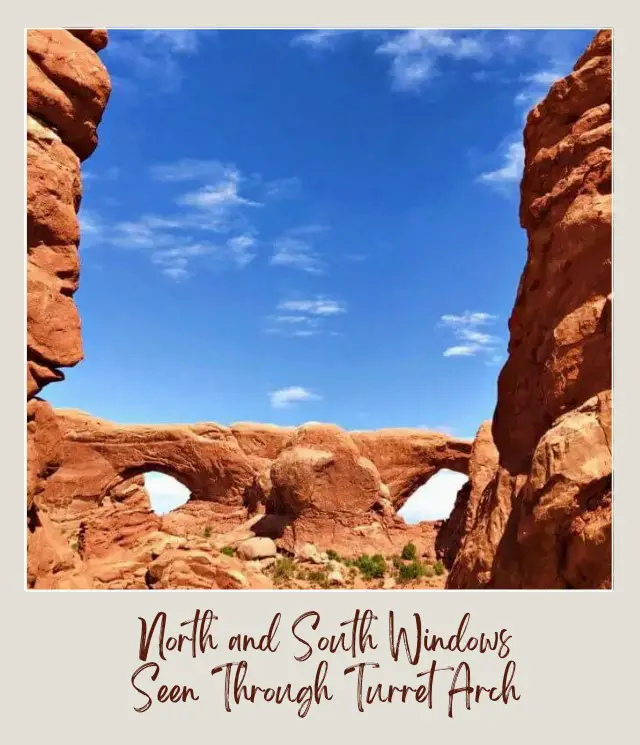
How many arches are in Arches National Park?
There are over 2,000 arches at Arches National Park. The exact number of arches is changing all the time as new ones form and old ones collapse.
Did you know there are four types of natural arches in the park?
✳️ Cliff Wall Arches appear on the side of or adjacent to rock walls or cliffs.
✳️ Free-Standing Arches are the most obvious kind of arch: they stand alone, independent of other rock walls or fins. A few arches of this type have been called “windows” for the scenic views they frame.
✳️ Pothole Arches form when a pothole on top of a rock mass merges with an alcove on a rock face.
✳️ Natural Bridges sit astride a stream or stream channel.
2. The most famous arch in Arches National Park is featured on Utah’s license plate

The most famous arch in the national park (the world?) is Delicate Arch. It is a rare completely free-standing arch with a dramatic location. It’s the largest free-standing arch in the park, with an opening 346 feet high and 32 feet wide.
Delicate Arch is reached at the end of a 3-mile hike that goes along a narrow ledge near the end, the arch sits atop the rim of a sandstone bowl near the edge of a cliff. It will collapse one day, btu for now,
3. There have only been a few deaths at Arches National Park
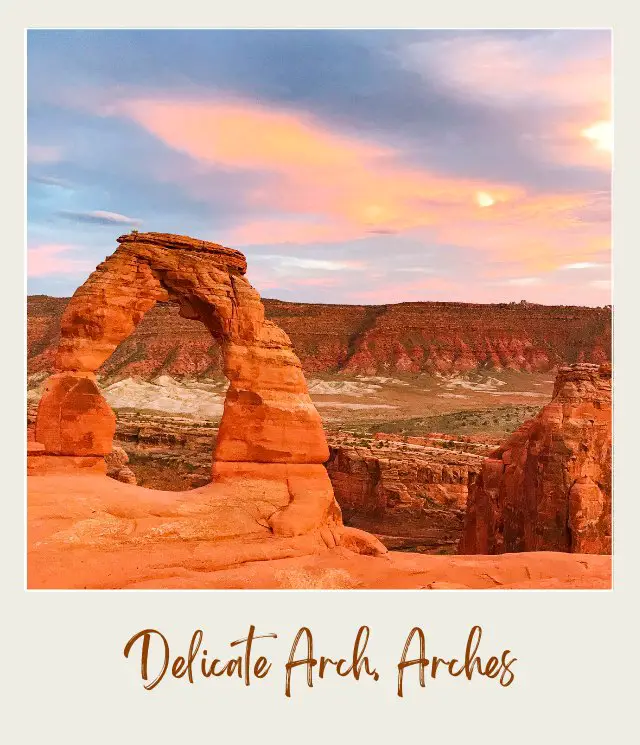
It is possible to slip and fall to your death in Arches national park. However, there have only been 6 deaths in total. 2 falls, one environmental, 2 natural deaths and one undetermined. That may seem a lot, but compared with the 900 people who have died in Grand Canyon National Park, that’s not many at all!
➡️ If this kind of thing is of interest, there’s a fun book Over the Edge: Death in Grand Canyon – get it here.
4. The Balanced Rock is the Size of Three School Buses
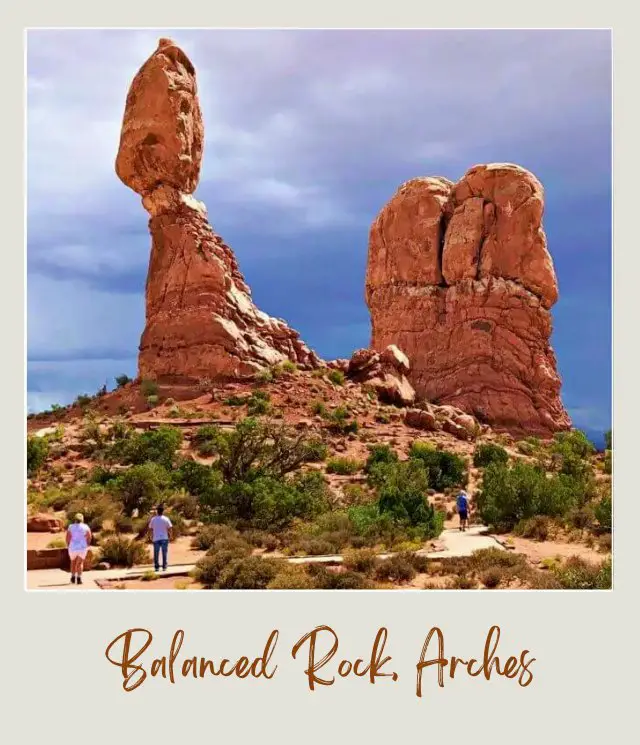
Balanced Rock is not an arch, but is nonetheless one of the most iconic features in Arches National Park. It looks like a large rock pillar with another rock balanced on top of it. The total height is 128 feet tall – and the rock ‘balanced’ on top is as big as three school buses!
The name is a misnomer, however. Although it looks – from some angles – as if the large rock is balanced on top f the pedestal, they are actually joined together. They are two different types of rocks – the top rock is Entrada Sandstone and the pedestal is Dewey Bridge mudstone.
One day is will erode so much that it will fall down. In fact, it used to have a smaller sibling “Chipo-Off-The-Old-Block”, which collapsed in 1975-76.
5. The 4th longest natural span in the world is in Arches National Park
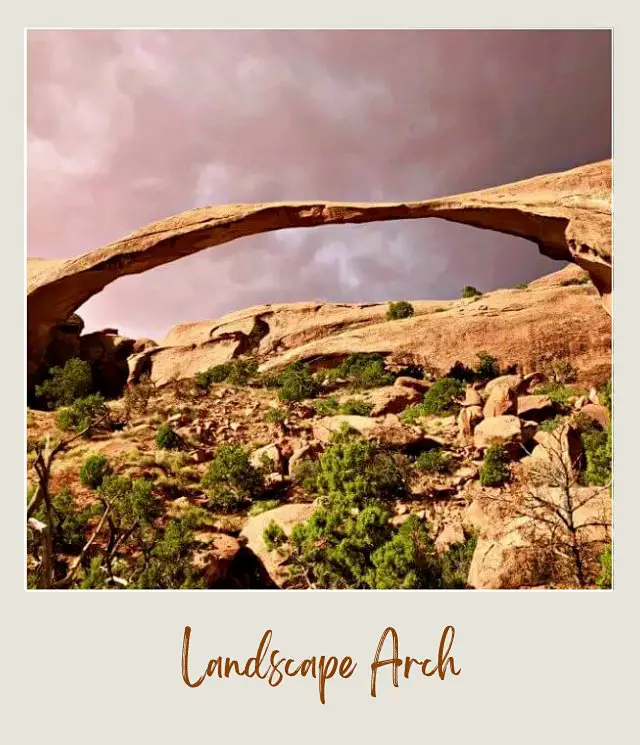
Landscape Arch has a span of 306 feet, making it the longest natural arch in North America. Its length is surpassed only by three natural arches in China.
To get to the arch, take the easy 1.8-mile round trip trail that starts the Devil’s Garden Trail. You can continue on to Double O Arch or turn around.
➡️ Read my full Devil’s Garden Trail Guide.
6. The arch with the tallest opening is Double Arch
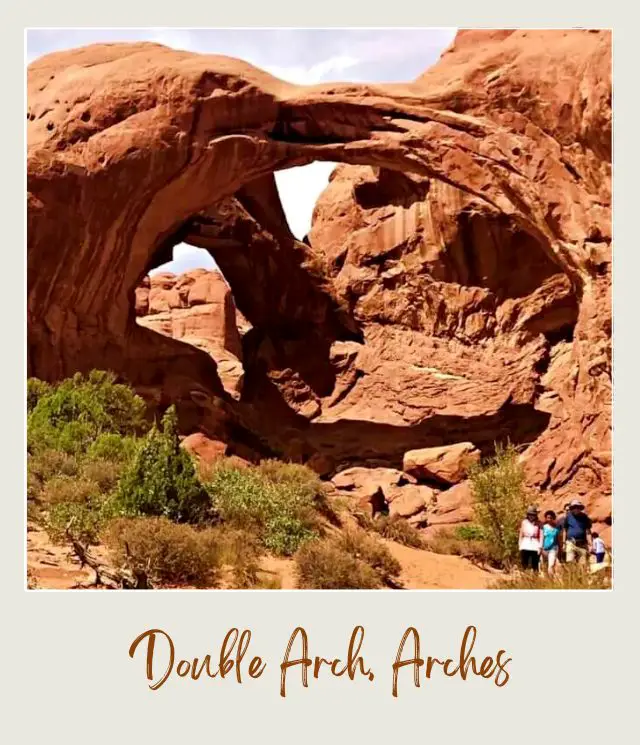
The southern span of Double Arch is an incredible 112 feet tall. It’s also the third-widest arch in the park, at 144 feet across.
The arch is reached along a short trail in the Windows Section.
➡️ Read More: Best Hikes in Arches National Park
7. Temperatures can vary by over 40 degrees in one day
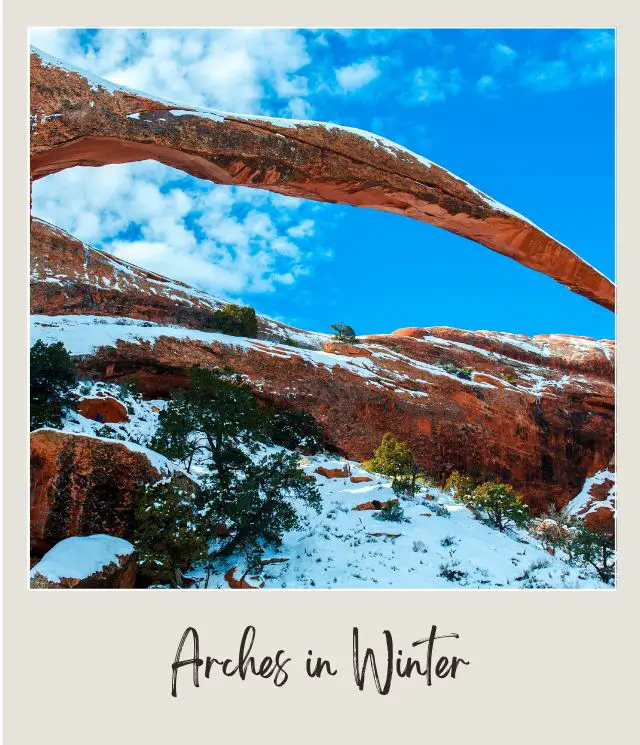
Arches National Park is in the middle of the desert – but also at a high altitude. Day time temperatures in summer can soar well over 100°F and it can snow in winter. In one day, day and night time temperatures can vary dramatically. Weather can also change rapidly, so it’s important to always wear layers.
These extremes in temperatures help form the natural arches. Water seeps into cracks in the rocks in the day, then freezes at night, expanding the cracks and helping weather the rocks.
8. Arches National Park is officially an International Dark Sky Park
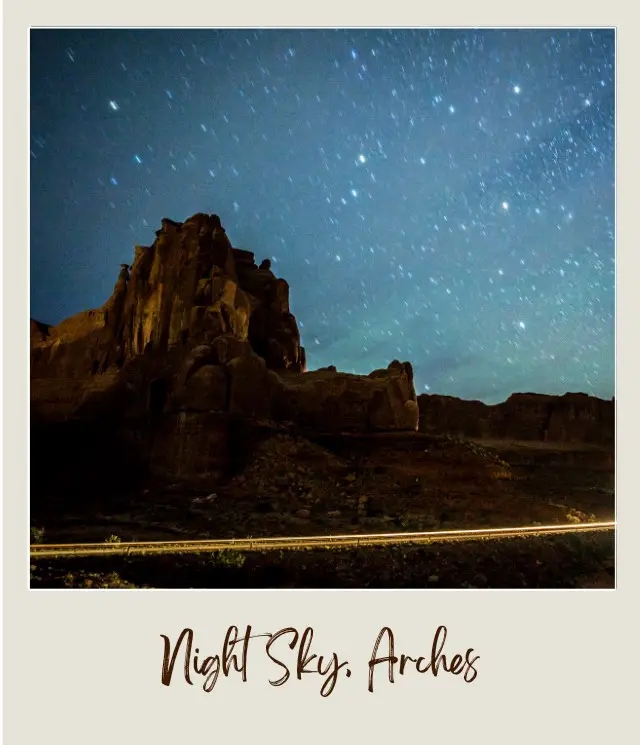
Arches National Park was designated an official International Dark Sky Park in 2019. This means that area is free of light pollution and is one of the best places in the United States for star gazing and to see the Milky Way.
When getting to your photography spot, be sure to wear a headlamp with a red light. The red light is less harsh than white light, so improves your night visions. ➡️ You can get one here if you need one.
9. Arches National Park has featured in many iconic movies
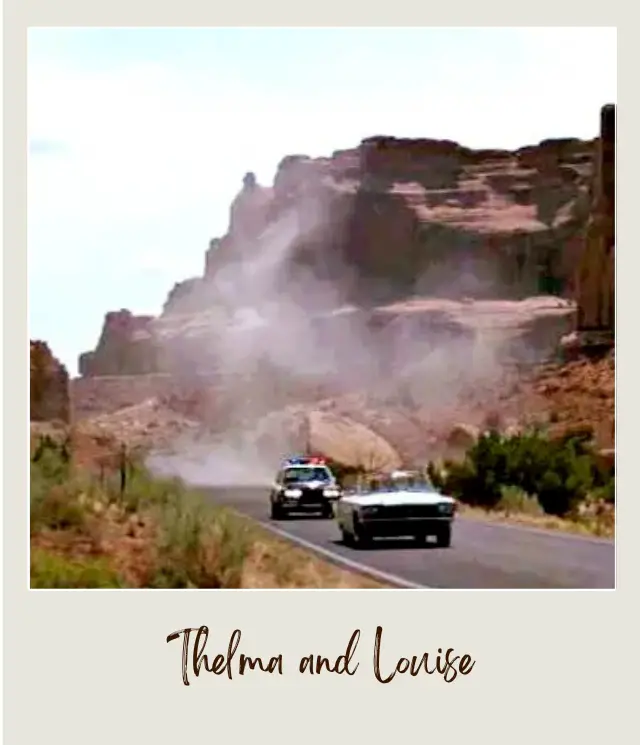
Do you remember the opening scene of Indiana Jones & The Last Crusade? The boy scouts (including a young Indiana Jones) ride horses through the Double Arch section of Arches National Park.
How about the scene in Thelma and Louise where they take the trooper’s gun and leave him locked up in the trunk of his car? That was filmed at the Courthouse Towers section of Arches National Park.
10. Arches National Park Has paintings that are 4,000 years old
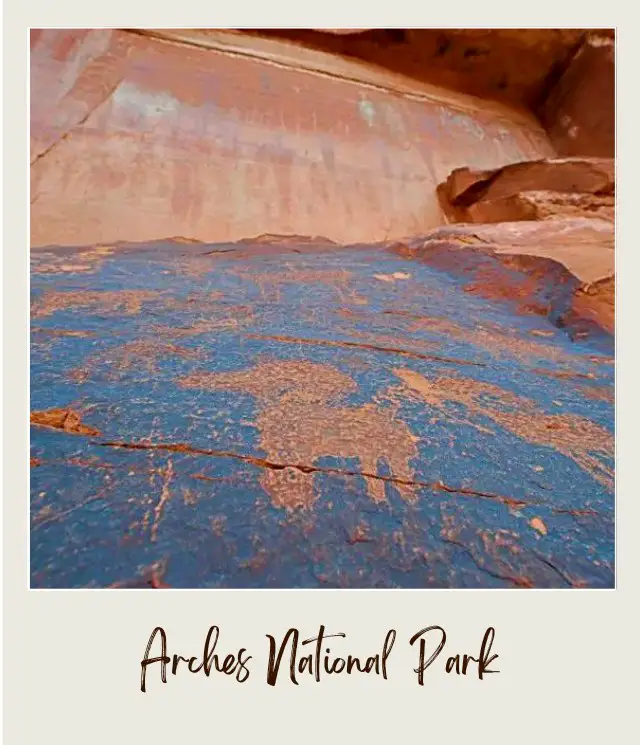
The Courthouse Wash panel at Arches National Park feature pictographs that are between 1,400 and 4,000 years old. These incredible hand paintings reveal even more detail when photographed with infrared light. The pictographs lie just outside the park entrance and there is a small parking area and a short walk to get to get to them.
11. The entire park used to be under water
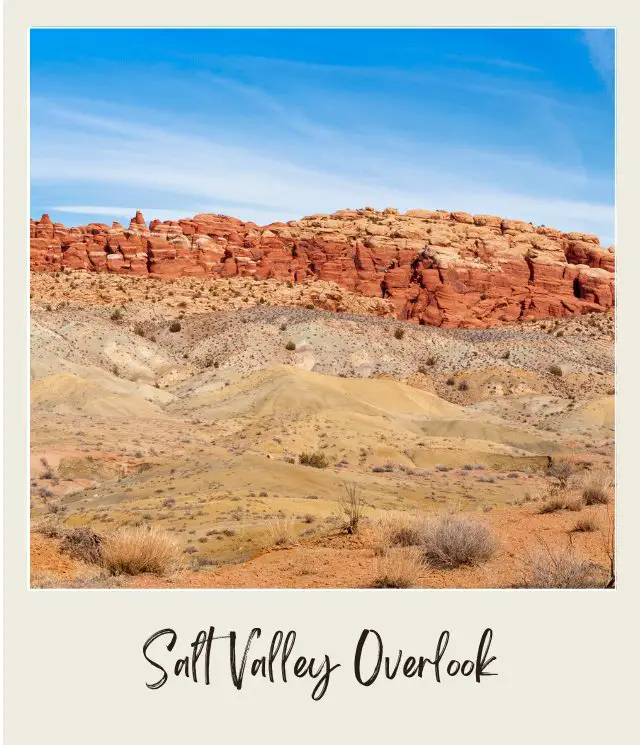
In between the sections of the national park that have arches is a giant salt valley. This whole area dry seabed used to be an inland sea. The sand formed dunes that petrified and turned into the rock that then eroded to form the natural arches in the park.
12. The soil in Arches National Park is alive
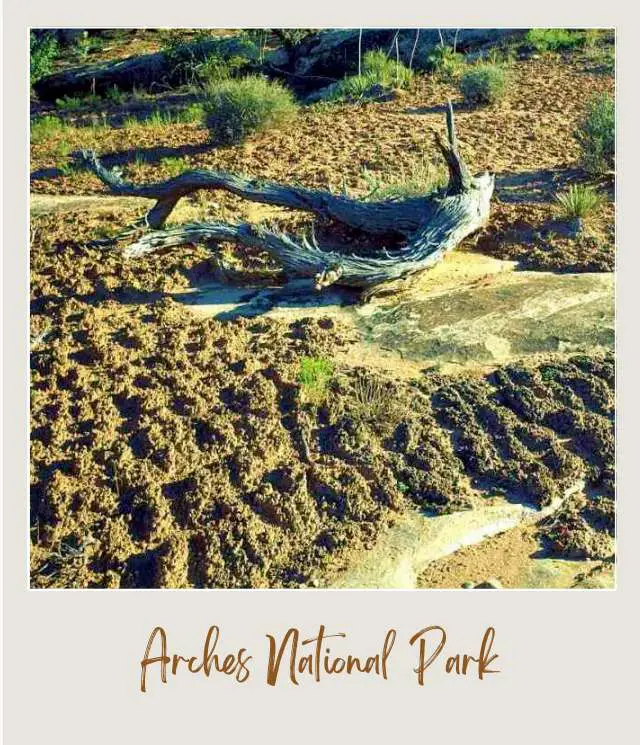
What looks like dark soil on the ground is biological soil – or cryptobiotic crust. It’s made up of cyanobacteria, fungi, lichen, algae, and mosses. The biological crust lies dormant when it’s dry and grows when it gets wet. It helps prevent soil erosion and is an essential part of the local ecosystem. It moves around when wet and plays an essential role in protecting the land from erosion.
You can tell it by its darker color and sponge-like appearance. It can take decades to grow and can be killed in an instant if you walk on it, so it is super important to stay on trails and avoid walking on the living soil.
➡️ Read more Fun Facts about other US National Parks
More Information About Arches National Park
Are you feeling inspired to visit Arches National Park? Start planning your trip now with these guides:
⭐ Planning a Trip to Arches National Park: 7 Mistakes to Avoid
⭐ How Many Days in Arches National Park Do You Need?
⭐ Guide To The Arches National Park Reservations System
⭐ The 10 Best Hikes in Arches National Park
⭐ In-Depth Guide To The Devil’s Garden Hike
⭐ Arches Scenic Drive: Complete Guide to All the Stops
⭐ How To Get To Arches National Park
⭐ What Is The Closest Airport To Arches National Park?
⭐ All the Airports near Arches National Park
⭐ When is the Best Time to Visit Arches National Park?
⭐ Visiting Arches National Park: What To Expect Throughout the Year
⭐ 10 Tips For Visiting Arches National Park
⭐ Arches Itinerary
⭐ The Best Airbnb Moab
⭐ The Best Books About Arches National Park
Do you have any other Arches National Park facts to share? I’d love to hear them. Join my private Facebook group National Parks Collectors and comment and let me know (you can also pick up extra planning tips, share your photos and stories with other national park lovers and more).
Subscribe to daily national parks planning tips, travel inspiration and trip ideas and get instant access to the free PDF
Fun Facts About Arches National Park
If you liked this article about interesting facts about Arches National Park, Utah, please share the love and Pin It to your Arches National Park board!


💡 Are you just starting to think about taking a national parks trip? Get Inspiration
‼️ Are you looking for helpful tips for visiting US national parks? Read articles that share useful tips on a range of national-park related issues
💻 Are you starting to plan a trip to Arches National Park? Read my Guide to Arches National Park
📋 Do you want a ready-made super detailed plan for your trip to Arches? Get a detailed 1 – 3-day Arches National Park Itinerary
🛏️ Are you looking for a place to stay near Arches National Park? Find a vacation rental near Arches National Park
💲 Are you ready to book your trip? Use these Planning and Booking Resources
📖 Do you want to read a book about Arches National Park? Check out my Recommended Reading List for Arches National Park
About the Author

James Ian is a national park, camping and hiking expert.
He has dedicated his life to travel, visiting more than 80 countries, all 7 continents and most of the national parks in the United States. With over 35 years experience in the travel industry, James has worked on cruise ships, at resorts and hotels, and as a travel planner who’s helped hundreds of people plan successful trips to US national parks.
Based on his experience visiting our national parks multiple times, in-depth research and expertise as a travel planner, James has published detailed itineraries for many of the major national parks in the US. These itineraries, as well as in-depth park guides, and other resources will help you have your own incredible trip to US national parks without stress and hassle.
As a national park expert, James has contributed to many publications, including USA Today, Newsweek, Time Business News, Savoteur, Best Trip, and Wired.
I’m a member of the Amazon Services LLC Associates Program. As an Amazon Associate I earn from qualifying purchases.
